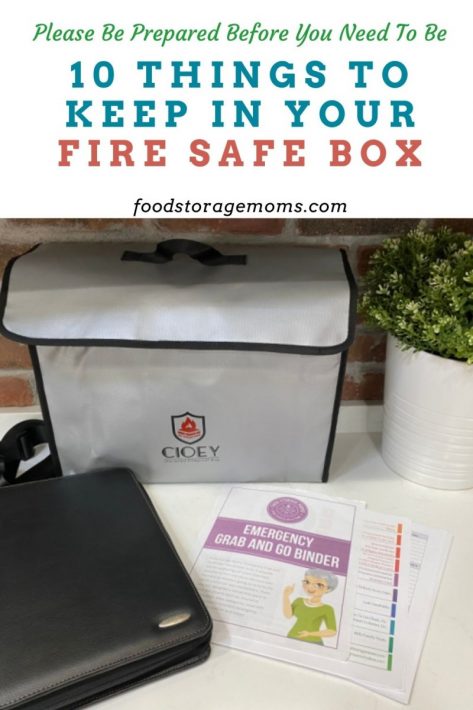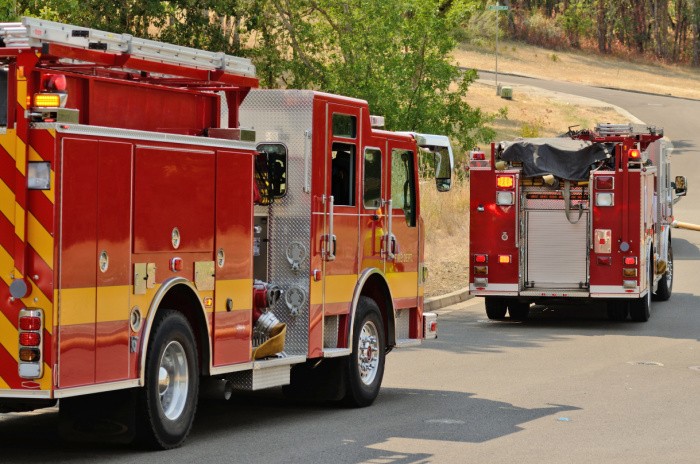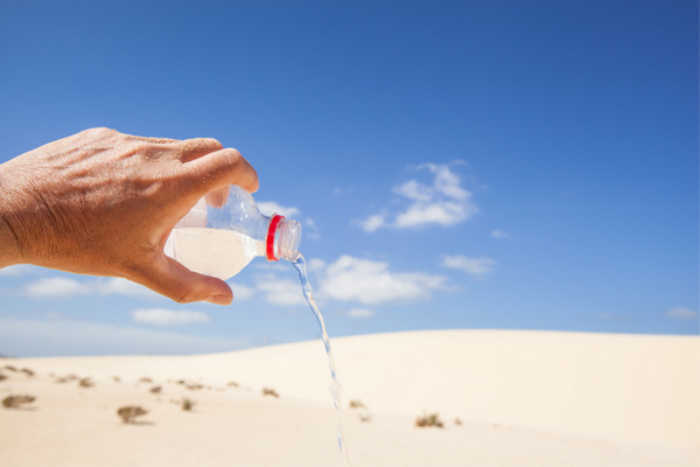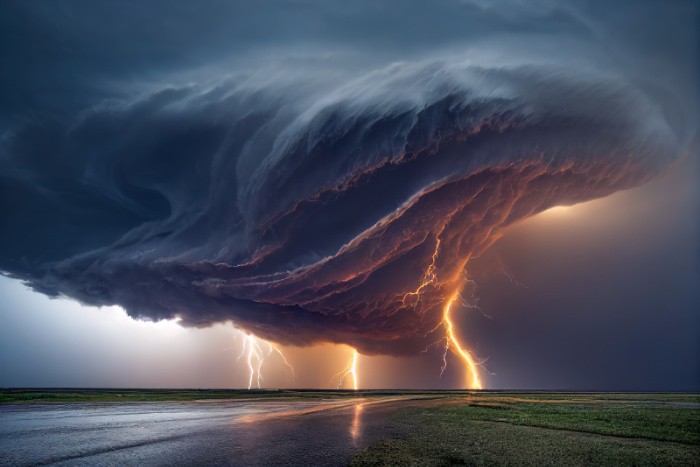10 Things to Keep in Your Fire Safe Box
Ray reminded me a few years ago about having a fire-safe box. As all my faithful readers know, my heartfelt wish is for each of them to feel the need to be as best prepared for unexpected emergencies as they possibly can. I’m updating this article so new readers will think about storing their essential items in a secure location.
Of course, it takes more than just feeling the need; they need to take those critical action steps to move forward with those preparations. That includes evaluating 10 things to keep in your fire-safe box.
The ”things” I’m referring to aren’t necessarily expensive jewelry or other possessions. I’m thinking more about documents you have that can make all the difference if your home burns down, is flooded, or may even be wiped out by a violent storm. You are now left to deal with the aftermath and how to reconstruct your life, so to speak.
The recent catastrophic fires in the Los Angeles, CA area have pointed out that many people have “everything” in their homes and are not necessarily protected as suggested.
Emergency Binder Contents
Many of you have taken advantage of my Emergency Binder, which you can download from my website. It outlines and has printouts of pages/sections of documents that will prove critical as you try to pull your life back together. Check it out and download it if you haven’t done so already. Emergency Binder Download. I prefer printing it on cardstock, and it’s actually in color if you want to print with a color printer.
Most of us have a safe deposit box at a bank, or at least we should have one. That is generally one of the safest places for critical documents and valuables. That is where we would keep most of the “originals” regarding documentation. The challenge is that the bank could have also been affected by the disaster, may have been closed for a period, or may be inaccessible from where you live. Or your bank, where you have a safe deposit box, is flattened by a tornado or hurricane.
As we’ll discuss later, the fire safe box is something portable that you’ll grab if you have to evacuate, but it will be kept in a location within your home that you feel will be the safest. This is the one I purchased: CIOEY Fireproof Document Bags – Fireproof Box.
Since each of us has different circumstances we live and deal with daily, your critical documents may vary somewhat from mine. Still, there are certainly some documents we’ll all need if we’ve been through a devastating emergency. Let’s look at 10 things to keep in your fire-safe box as starters, and we may even outline a whole bunch more if you’re interested.
10 Things to Keep in Your Fire Safe Box

Proof of Insurance
No matter what type of disaster has fully or partially destroyed your property, you’ll need copies of insurance policies. If you are flooded out, hopefully, you’ve got flood insurance. Fire is the most common emergency we can face, no matter where we live. Of course, there are sections of the country where people face tornados, hurricanes, earthquakes, etc. Be sure to have the contact information of your agent, who can assist you in this desperate time of need.
You should also have copies of your health insurance policies. Hopefully, you come out of the emergency safely and sound, but you may have been injured and must show you have medical coverage for the treatments you may be going through.
Heaven forbid that one of your loved ones may pass due to the disaster. In that case, you’ll need copies of life insurance policies that list the coverage amount, who the beneficiaries are, and how to file claims. If you tend to deal with one agent for all your insurance needs, call that agent as soon as possible.
Documents to Prove Who You and Your Family Members Are
As you pull your life together, you may need to prove who you are, the makeup of your family, and other vital information. The best source of this information is a birth certificate. You should have at least a copy of one for every family member, especially if they are still living with you.
This may also need to be backed up with the adoption papers of a family member brought into the fold through legal adoption. If there happen to be foster children living with you at the time of the emergency, for your protection and the safety of those children, foster parent documentation should be kept, too.
In today’s society, many of us are immigrants who need proof of naturalization or formal citizenship. Having passports, green cards, or military ID cards wouldn’t hurt to help prove who you are.
Pictures
I have mentioned before that you should add at least two pictures of every family member and pet in case you are separated after an unforeseen disaster. One for you to keep and one for the “board” (missing persons/animals) or law enforcement.
Rhonda mentioned this vital information: Besides proving who *you* are, consider adding pictures of pets who could get lost or separated from you in an emergency. If possible, have the photo taken *with you* to prove the connection/ownership. Show both sides of the animal and any identifying marks, scars, whorts, tattoos, etc. In the case of animals like horses with a shaggier winter coat, take winter pictures as well.
Leanne mentioned we should take photos of our home interior/exterior and a list of our personal property. Remembering all the items throughout your house once they’re gone will prove difficult, so make a list NOW and document the significant items with pictures.
Social Security Cards
After an emergency, you might find yourself looking for new employment. It could be that your place of employment was also destroyed or possibly damaged to the point it may not open for an extended period. You must sign a new W-4 and present your SS cards as part of the employment and benefits process.
It’s sad to say how much revolves around these government-issued documents. It’s more than just the filing of taxes. Personal identification on so many levels uses your social security number.
Proof of Marital or Partnership Status
It’s surprising how many new circumstances exist where proof of marital status is serious business. It can affect tax filings, medical insurance coverage, 401K participation, medical leave benefits, etc. Including marriage-related agreements, such as prenuptial agreements, would also be a good idea.
If you’re no longer married, you should also have proof of that status through a divorce decree, alimony requirements to be paid, and child support stipulations.
Estate Documents
The last thing you want to get involved in is a contested estate status situation. You, for sure, not only need a will but one that is somewhat foolproof by way of legal certification, notarization, etc. You may also have a trust set up to help protect your financial assets from tax issues that may come up later.
Many of us have established what is called a living will. It may not be related to the current emergency. Still, a living will directs your surviving family members what your wishes are in case you become incapacitated and can’t make life-altering decisions on your own. That may include if and under what circumstances you want to be put on life support or taken off life support under certain circumstances.
There also may be times when using a power of attorney may be appropriate. There may be a situation where you are put in the position to sign papers on behalf of someone else. It may include the authorization to sign off/sell assets, place someone in a care center, provide for burial arrangements, etc.
Unique Government, Military, Retirement, or Disability Benefit Documents
One of the worst things to happen after an emergency is to be cut off from any unique benefits for some reason. Maybe the home or apartment you lived in was government-subsidized housing, or a VA loan was in place. You want to be able to document your status as one who should continue to qualify for these benefits without interruption.
Proof of Home Ownership Is Vital
Yes, you can go to the county clerk’s office to get copies of trust deed filings, but they may be closed when you need the information, or it may cost you fees to get copies. If you have copies of your mortgage documentation, real estate deeds of trust, and any other property ownership documentation specific to your location, be prepared and have them in your fire-safe box.
Proof of Vehicle Ownership, Current Registration, and License Info
One of life’s joys is interacting with your city, county, or state’s Department of Motor Vehicles (DMV). Sorry to say, but they tend to be the subject of many not-so-friendly jokes due to their operating hours, less-than-helpful service, and stiff penalties for non-compliance with regulations. Put copies of your car’s current registration, vehicle titles, and insurance papers in the fire-safe box.
This includes copies of your state IDs and/or driver’s license. As mentioned earlier, your immigration status and required documentation are also critical.
Stock, bond, commercial paper, certificates of deposit, and cryptocurrency ownership info
Again, you don’t want to keep original documents at home that, if destroyed, could wipe you out financially. The emergency has already put you in an uncomfortable position. Loss of financial assets compounds your challenges. Keep copies of recent bank statements, stock transfer documentation, bond purchase affidavits, etc. You can show the status if needed with a copy.
Most recent local, state, and federal tax filings
If your luck is like mine, you’ll find yourself in the middle of a state or federal tax audit while trying to pull all the rest of your life-altering issues together. You’re much better off having copies of the last two or three years of tax filing available. If you have room, include the backup documentation for income and deductions.
Consider storing essential papers listed below:
Reward accounts like your frequent flyer program agreements or recent statements.
Mortgage statements showing current payment status.
Lease agreements on your living quarters, car, or other property.
Student loan documents and recent payment receipts.
Record of immunizations and vaccines.
Dental records, DNA reports, and ancestry data.
Military ID and/or discharge DD 214 form to prove full-time service to receive veteran benefits. (Certificate of Release or Discharge from Active Duty)
USB Drive
Be sure to back up what you have on a USB drive if you lose everything in your home. Please store it where you have access if you must evacuate your home in minutes.
Do You Want a Fireproof Safe at Home or a Fire Safe Box?
One of my readers recently introduced me to a product I wasn’t familiar with, the fire-safe box/bag by CIOEY. Mark and I have had a sturdy, fireproof safe in our home for over 40 years. It has proved convenient, doesn’t take up too much room, and comforts us that our critical documents are safe.
I’ve often wondered if we would have time to open the safe and pull out all those documents I’ve suggested my readers have available if they needed to evacuate in a hurry, as outlined in my Emergency Binder. I’ve made copies of the most critical items and put them in the CIOEY fire-safe bag I ordered. That way, I’ll have a backup copy of things I’ll need if/when we need to leave the house during an emergency. I can put the binder right in the fire-safe bag, and away we go.
CIOEY Fire-safe Bag
CIOEY Fireproof Document Bags – Fireproof Box.
I’ve outlined some of the key features that make this bag so attractive and valuable, as found on their website:
This bag is thermally insulated, has the highest fireproof rating for like bags, and is water-resistant. It can withstand heat up to 2000 F. using the UL94 V-0 certified fiberglass fabric. The mid-layer is also thermally insulated and has an aluminum foil coating.
It’s an easy-access bag with wide openings. The materials are easy to clean using a damp cloth. Carrying the bag is comfortable since there are no itchy surfaces. It also should prove durable, and the travel strap is handy. The strap has been tested to hold up to 45 pounds, and the carrying handles up to 35 pounds.
The bag has rugged, lockable zippers, a Velcro covering flap, and fire-retardant stitching. It is designed well with reinforced seams, a wide hook, and loop fasteners, all showing high-quality craftsmanship. The bag is 16 inches long, 12 inches high, and 5 inches wide, dimensions that will prove versatile as you fill it with so many critical documents as outlined.
In case you missed this post on my FREE Binder content, Critical Documents You Need for Emergencies
- Zippered Binder
- Colored Divider Tabs
- Zippered Binder Pockets
- Horizontal Photo Pages
- Binder Pockets
- Sheet Protectors
Some things to consider when storing your essential documents:
What Fire Rating Should I Look For?
Most fire protection safes or boxes have a rating based on temperature and length of time before ignition ranges, sometimes referred to as the fire endurance level. The higher the rating, the more often it relates to the purchase cost. Research what best fits your needs and budget, then move forward.
There are different kinds of locking mechanisms to consider.
The locks protecting your valuable documents come in different levels of sophistication. You can have a regular key lock, an electronic lock that typically uses a combination dial, or both. Each protects unauthorized entry, and they come in various price points. I like ours, which has a combination, but you can also use a key. Remember to have an extra key or two in a safe place if the one you usually use gets lost.
Water resistance is an issue to consider if you live near a flood zone or experience frequent heavy storms or hurricanes.
Very few safes or fireboxes are rated as “waterproof.” Most do have a level of water resistance, much like your wristwatch. The higher the rating, the safer your contents will be. Sometimes, they’re rated according to the depth of water level or possibly a pounds per square inch factor. You’ll need to decide how important this may be and how much you’ll pay for better protection.
An additional safety step would be to put the papers or other valuables in the safe in waterproof bags before locking them in the safe. That could prove to be a more cost-effective approach.
Think about possibly putting some other valuables in your fire safe or box.
I’ve emphasized putting things like paper documents in your safe or fire safe box at home and putting things like jewelry, coin collections, bonds, and other financial instruments in a safe deposit box at your local bank. You may want to consider putting some things with sentimental value in the safe or fire-safe box, like trinkets, stamp collections, or other memorabilia.
It all comes down to their value and the price you’re willing to pay to keep them safe. Space is also an issue since safety deposit boxes generally aren’t huge, and the bigger ones can be costly to rent from your financial institution.
Other features to consider:
Some features you may want to consider would be if you’d like a light inside the safe or fire-safe box. You probably won’t have power in a disaster, so using a flashlight or battery-powered internal light would prove handy.
Is it essential to have very thick gauged steel, or will a tough fabric do? The value of the contents and the cost for the highest level of protection all come into play. These containers are often UL-rated, so again, do your research.
Having some shelving inside was essential to me. I have some shelves at the top of my home-based safe where I can place things, and they slide out. On the bottom are hangers so I can put dividers that hold my document files.
I talked about the portability of the container. If that isn’t high on your priority list, maybe you should consider a way to bolt yours down so it stays in place and becomes difficult to remove if vandals find it.
Final Word
It feels so good to be prepared for the unexpected. I hope my post today puts a bug in your ear, if it hasn’t already, about gathering your essential documents and storing them safely. We can do this, yes we can. Please stay safe and stay well. May God Bless this world, Linda






















Besides proving who *you* are–consider adding pictures of pets, who could get lost or separated from you in an emergency. If possible, have the picture taken *with you* to prove the connection/ownership. Show both sides, and show any identifying marks, scars, whorls, tattoos, etc. In the case of animals like horses, with a shaggier winter coat, take winter pictures as well.
Hi Rhonda!! OHHHHHHH! I have always talked about pictures of pets but you are so right about the horses with shaggier winter coats! Oh my gosh, great comment! Some of us do not have horses, I love this tip!! Thank you! Plus all the identifying marks, scars, etc. I LOVE this comment! Thank you, Linda
Hi Rhonda, I’m going to add this to my post, by the way. Thank you! Linda
Oh, Linda, I’m so glad you showed this portable bag! I’ve got to share my experience with my safe as a ‘warning’ for others. This is a small/medium (like 15 tall, 18 inch long) safe. Bought in ’94 from a reputable locksmith/safe dealer. Heavy enough where it’d be a pain to steal it, lol. It had a battery powered digital keypad with a backup key to open it. At some point, the battery holder inside started to let the batteries fall out. So, I started using the key instead. I kept the purchase agreement, receipt and key in a separate bag in my dresser. So, here’s first advice: keep your purchase agreement/receipt separate because a reputable locksmith Will ask for it as well as ID if it needs to be opened by them in the future. Next advice: if one part of the lock starts giving a problem, bring it back to where you bought it, get it fixed while you can still open it. I was using the little key to open it for many years. Guess what?…my little key started wearing…then the tip broke in the lock! No more opening it. I now live 45 miles from the biz where I bought it. I got to haul it down to them as I know they can open safes, especially any sold by them. I had my purchase papers ready, along with my ID, which they were impressed by. If I hadn’t had the purchase papers, I would have had to wait for them to check the safe serial numbers, description and run my ID before they’d open it. Yep, to make sure it wasn’t stolen. Could have taken days. (Um, yes, list your safe serial # with insurance for police reports in case of a burglary.) So, yes, I could get it opened but because I hadn’t brought it down when it started having problems, meaning they had to remove, drill out the openings, my lifetime warranty was void. So that’s the third heads-up. I also got to pay $89 for this. Would have been more if I’d brought it to another locksmith even with my paperwork ready. Frankly, it was too old to replace the digital keypad and keylock. My safe now has holes where the lock stuff Was…not as fire or waterproof. This safe that was $189, now costs almost $400. If I’d brought it in when the battery holder let the batteries fall out, it would have been covered under the warranty. When the key had to be jiggled, it would have been covered by warranty. It took the locksmith almost 3 hours to open it so I understand the $89 charge. So, for anyone having a safe, if problems happen with the lock, get it fixed asap. Also, check the info papers…many bought from a licensed locksmith have a lifetime warranty which you don’t want voided. The owner did tell me that if I put duct tape inside over the holes, outside over the holes, maybe the papers, jewelry inside would still be ok if just a small fire or flood? Um, I really don’t have an extra $400 to buy another small safe so hopefully the portable bag one doesn’t cost this much? Just a heads-up, but I sure never thought this much ahead. Lol, when I sold my house, I got a Huge check which I put in a safe at my office over the weekend til I could get into the bank on Monday. I was worried my smaller safe could be stolen. It’s one that was a bank safe but it’s a bee-itch to open. Biz is owned by my son’s dad and I’ve told him too to have the lock rehabbed. I’m not even sure if I still have the combo for it. It can’t be moved…it weighs over 2000 lbs. Heehee, it came with the building when he bought it in ’75? Folks, check your locks on your safes! Hope this story helps someone. Peace out!
Hi Wendy, oh my gosh, this comment is the best!! I do not have the receipts to my safe, I have had it so many years. I never thought to keep them for what you went through! OH MY GOSH!! I have changed the batteries once and I do have the key, but oh my gosh, this comment will make ALL OF US THINK about our safes! Thank you so much!! Linda
I am sure that “fire proof” containers are much much better than back in the 1960s and 1990s but some additional cautions. In 1963, our home burned (I was 12). My parents kept a lot of important papers, cash, jewelry, etc., in this “fire proof” safe. After the fire, my dad was able to find the box and while the papers didn’t burn, the coins and jewelry melted. AND when he got the thing open, the papers disintegrated. Then, in 1993, my parent’s home burned due to a forest fire. Dad had a much better safe and fortunately he was able to get most of the items out during his evacuation. But, there were still some things in the safe. The paper items again, did not burn but did disintegrate upon opening. To say the least, these safes were fire proof but did not prevent serious damage to the items inside.
What I have done for important papers: I have a file folder with copies of my documents that are kept in my daughter’s safe as well as my own safe. I also have photos of all of the documents on a computer CD and thumb drive.
Just some things to think about from personal, albeit, old experience!!
Hi Leanne, I remember you and your family have gone through two fires, great tips to help all of us. This bag is designed to take with us as we evacuate. I have a safe but I can’t haul it, so my thinking was grabbing this bag that’s inside the safe, of course, I would have to be home to grab it. I’m home more than I’m gone. Fingers crossed I never need to take it. We really do need to make a plan ahead of time. Great comment, Linda
Oh – something else that should be kept with your important papers AND off site: photos of your home interior/exterior and a list of personal property.
Hi Leanne, great tip, I need to add that to the post!! Good one! Thank you, Linda
I make sure my son has access because if something happens to both me and his mom he’s the one stuck with the need for things
Hi Matt, great idea, I have done the same thing. We must be prepared for whatever happens to us as well. Out kids can take the lead. Great reminder. Linda
Having lived in a hurricane zone (Florida) for 22 years, we have had to evacuate several times. A “to go” box with all this information is vital and needs to be portable. Grandpa’s save you inherited 20 years ago might be theft proof, but you are not going to get it into your KIA. Another tip is to keep those documents current to include updated pictures. Set a date on your calendars and electronic devices to do this at least once a year. For us it was June 1st, the official start of hurricane season in Florida. Pick a day where you will have the dedicated time (not a work day obviously) to physically go through and verify/update each document. Also list each document on a spreadsheet or check list were you can date and initial. Don’t forget to add additional blank lines to add newly acquired documents as well. Speaking of evacuations, lists of tasks needed for different disasters/scenarios, should be readily available for everyone in your household. It will be good to practice these evacuation procedures periodically as well so it is familiar to all involved. Designate primary and alternate people for each task list as this might change before it’s time to update your plans. Updating is something we might not look forward to, but is something that is of upmost importance. Now for me, off to purchase a fireproof “to go” box!
HI Mark, oh, I LOVE LOVE LOVE your comment. You know most of us take for granted to update things every year. Your idea of June 1st (the official start of Hurricane season in Florida, is brilliant)!! I love this! Updating pictures, adding documents, or replacing old ones. It’s what we mus do to stay on top of things. LOVE your comment, thank you, Linda
Linda, really great and informative article. Water resistance is also important in case of a fire. The firefighters can flood the area around your safe and if the safe isn’t fairly waterproof your valuable documents can be ruined.
Always look for at least a safe that is one hour rated at 1400 F. And I only trust physical combination locks–no electronic keypad for me. Sure there are also keys, just don’t keep them in the safe :-).
And one of the most important things to keep in your safe is your emergency cash fund. That way it’s accessible at all times, even if the banks are closed.
Hi Ray, you’re the one that reminded me to repost this article. Or at least reminded me of the firebox idea!! Thank you! LOL! Yeah, don’t lock the keys inside!! I have one that would need a heavy-duty dolly to move so the bag fits well inside of it. Like Mark S. said we could not get it in a KIA car! Love that comment! Cash is critical. Great comment, Linda
Linda, and call me anal but that fireproof bag you have is what I keep stuff in–and that bag is inside my actual fireproof safe.
One other thing. Always keep desiccant packs inside your safe so your documents don’t get moldy from humidity. I learned this the hard way and I was living in very arid Arizona.
Hi Ray, wow, I have never put desiccant packs in my safe, wow! Great tip! We’re both anal, we must be prepared for everything! Love your comment, Linda
Another thing that Linda mentioned that is so very, very important: Please have a will and copies where you (or your heirs) can find it. I’ll try to make this short, but it is a mess of a story. When my parents were in their mid-80’s, my dad had Alzheimer’s and my mom’s health was failing so she couldn’t take care of him. (Not to mention he was a 6’2″ guy weighing about 190lbs and she was 5′ on a “tall day” and weighed in at about 110lbs.) My youngest sister moved in to care for them. She was the only one who had access to the only copies of their wills. When they passed in 2018 at ages 92 (dad) and 10 months later my mom passed at 93 years old, their wills were “no where to be found, our #4 sister must have shredded them.” There’s a lot of emotional garbage that goes along with this, but there were savings, stock, and the money from the old house my parents had owned for more than 60 years when it was sold…. all missing. They had no savings, no stocks, and about $1500 in checking when my mom passed. Without the will, we couldn’t prove any of that existed. We could have hired attorneys and forensic accountants to sue her and find the money, but without knowing how much money, we all decided it was not worth the emotional cost. Because I’m 1500 miles away, I am able to avoid #5 sister, but when she does things like take a month long trip to Europe, I feel bitter about it. So please, for the sake of future generations, have a will and make sure that all the children have a copy. Hubby and I wrote our wills. I love the fire bags that Linda posted and I plan to get one for each of my kids and put a copy of our wills plus a document listing all our financial accounts with contact info inside. Won’t happen this year as I’ve got Christmas planned out, but I am thinking it might be a good Valentine’s gift…. after all, the means to keep their sibling relationship strong in the future is a gift of love. Now, I’ll get off that tangent.
Another thing you need to keep in the fire safe is a list of all your doctors and their contact information. In an age where everything is digital, what would you do if you lost all that and then needed to see your cardiologist? This way you would have that information. Another thing I love about the idea of Linda’s fire bags is that I can store my medical binder in it and still have easy access to it when I have a doctor’s appointment. It seems that my new retirement hobby is collecting diagnoses and specialists, it would take me a while to remember who treats what and when I saw them last. So a list would be helpful. The same with a list of the online medical chart websites with user name and password. This is one area where redundancy is a good idea.
Hi Topaz, it is so sad to hear stories like yours. Greed is a selfish trait, or whatever we may call it. You know what I’m what I mean. It’s so hard when families break apart after the death of loved ones. You are so right, make sure everyone has a copy of a will or a family trust. Great comment, my sweet friend. Thank you for sharing, people will learn from it. Linda
Thanks for this reminder post!!!
I have a fireproof gun safe, but I don’t use it for papers!! I have, instead, a Nokbox (https://www.thenokbox.com/). Nokbox = Next of Kin box! They have a fireproof box as well as other non-fireproof items. This box is a filing system for important papers and items for your next of kin in the event of your death. I don’t have the fireproof box, but I do have all of the documents on a CD AND thumb drive stored at my daughter’s home in their massive gun safe! If I add paperwork to this box, I also scan the documents. I periodically get the CD and thumb drive from my daughter to add new documents to them. She also has paper copies of most of the documents in a single file folder (I reduced the sizes to lessen the bulk.)
I want to reiterate my previous comments about safes going through a fire! DO NOT OPEN THE SAFE FOR SEVERAL WEEKS after a fire. The safe and contents must be cold! Perhaps the safes now are much better quality than the experiences I have seen in my family’s fires, but those we had did not prevent coins and jewelry from melting (and combining!). Paperwork and cash crumbled when the safes were opened before complete cooling occurred.
Don’t forget to also do a photo inventory of your home – photos of all the walls, furniture, big ticket items, garage, storage sheds, etc. In the case of a fire, the insurance company will no doubt require an inventory. I don’t think it is critical to have the number of pairs of socks or how many undies you have but certainly you want a way to prove most of the things you do have.
Talk to your insurance agency regarding replacement value insurance. Also, talk to your agency about riders: guns, artwork, jewelry – those items are not typically covered in full on a regular homeowner’s policy. You might get something for those 8 guns but not full value unless they are appraised AND a rider written. And of course, keep a copy of the appraisal in your safe, copies on a CD and/or thumb drive in a separate location.
Hi Leanne, thank for sharing your thoughts you have been through 2 fires as I remember. This group actually has the information I posted in two posts and put it together in a package to purchase. I chose to have my readers print it themselves. I wrote two posts, how to organize your bills, and of course my Emergency binder. Whatever works, is awesome. Thanks for the reminder on letting the safe cool down. Now, if people will take the time to gather everything and put it in one box, they will feel so much better. Linda
Linda, I may be going a bit overboard but in addition to the fire resistant (no such thing as truly fireproof) kept inside a small 1 hour rated safe with a waterproof seal, that safe now resides inside a much larger safe which is also fire rated to 1400F for an hour. The reason that temp rating is so important is because most home fires won’t sustain such a high heat for that long. Home fires can, under the right conditions, reach temps of up to 2500F, but most don’t exceed 1500F and the hottest temps in those fires are up at the ceilings. So, if you have a basement that’s the perfect place for your fireplace safe (unless you live where if floods).
Anyhow, all of your important papers and a goodly portion of your emergency cash should be in a good safe.
Hi Ray, I was just looking through my paper work and updating stuff and discarding stuff, you know what I mean. I was looking for the paperwork on my safe to see the temperature limit. When you move you go through things and make sure everything is in order. I hope this article helps people put their important documents in a secure place. Linda